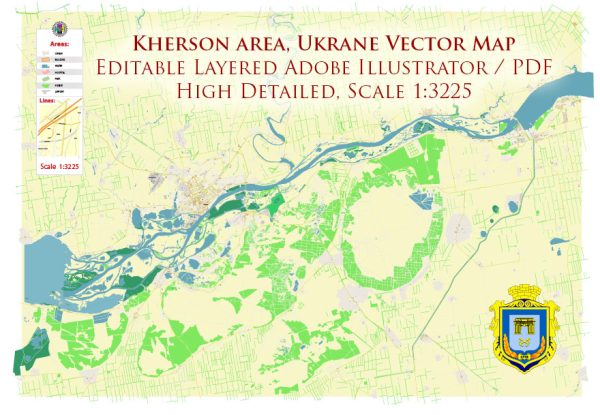Kherson, located in southern Ukraine at the confluence of the Dnieper and the Southern Bug rivers, has a rich history of urban development. Here’s a brief overview:
- Foundation and Early History:
- Kherson was founded in 1778 by Grigory Potemkin, a Russian military leader and statesman, as a strategic outpost and naval base during the Russo-Turkish War.
- The city was intended to serve as a center for trade and shipbuilding, facilitating access to the Black Sea and providing Russia with a more significant presence in the region.
- Imperial Era:
- Throughout the 19th century, Kherson developed as a key port and shipbuilding center of the Russian Empire. The city’s economic growth was closely tied to its maritime activities.
- In 1803, a shipyard was established in Kherson, further boosting its role in naval development.
- The city also became a significant center for trade, agriculture, and manufacturing, contributing to its prosperity.
- 19th and Early 20th Centuries:
- Kherson continued to flourish as an industrial and commercial hub in the late 19th century, with a growing population and expanding infrastructure.
- The construction of railways and bridges enhanced the city’s connectivity and facilitated the transportation of goods.
- Soviet Era:
- During the Soviet period, Kherson played a vital role in the development of the Ukrainian SSR. Industrialization efforts saw the expansion of existing industries and the establishment of new ones.
- The city’s population grew, and new housing and infrastructure projects were initiated.
- World War II:
- Kherson, like many cities in the Soviet Union, suffered significantly during World War II. It was occupied by German forces, leading to widespread destruction and loss of life.
- After the war, reconstruction efforts were undertaken to rebuild the city.
- Post-Soviet Period:
- Following the dissolution of the Soviet Union in 1991, Kherson became part of an independent Ukraine.
- The city faced economic challenges during the transition to a market-oriented economy, but efforts were made to diversify industries and promote economic stability.
- Recent Developments:
- In recent years, Kherson has continued to evolve as a regional center with a focus on trade, agriculture, and industry.
- Urban development projects have aimed to modernize infrastructure and enhance the quality of life for residents.
Kherson’s history reflects its strategic significance as a port city and its contributions to the economic and industrial development of the region. The city’s journey from a military outpost to a key urban center is a testament to its resilience and adaptability throughout the centuries.


 Author: Kirill Shrayber, Ph.D.
Author: Kirill Shrayber, Ph.D.